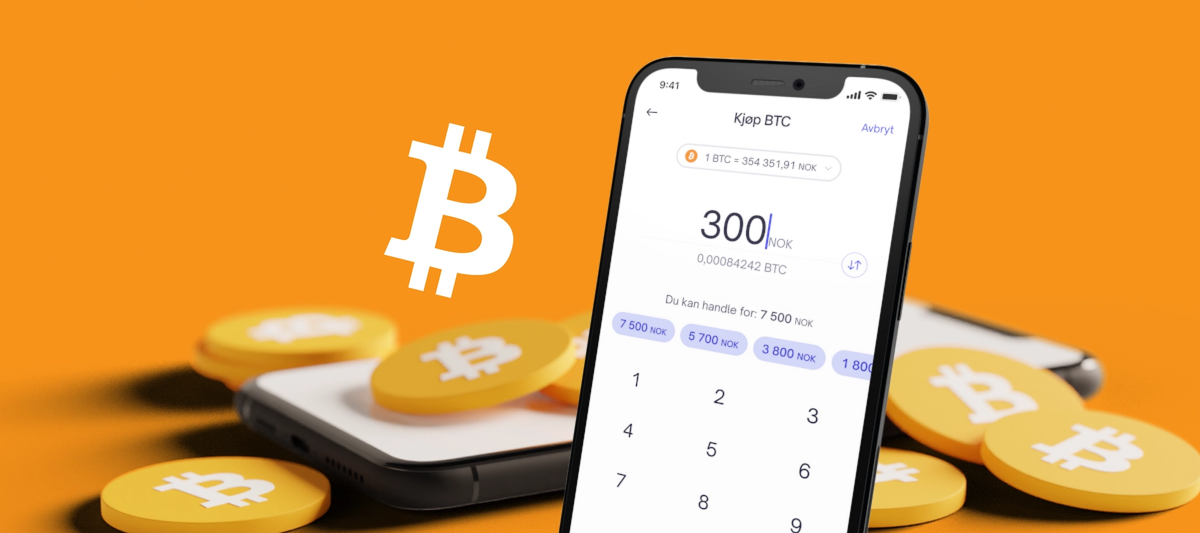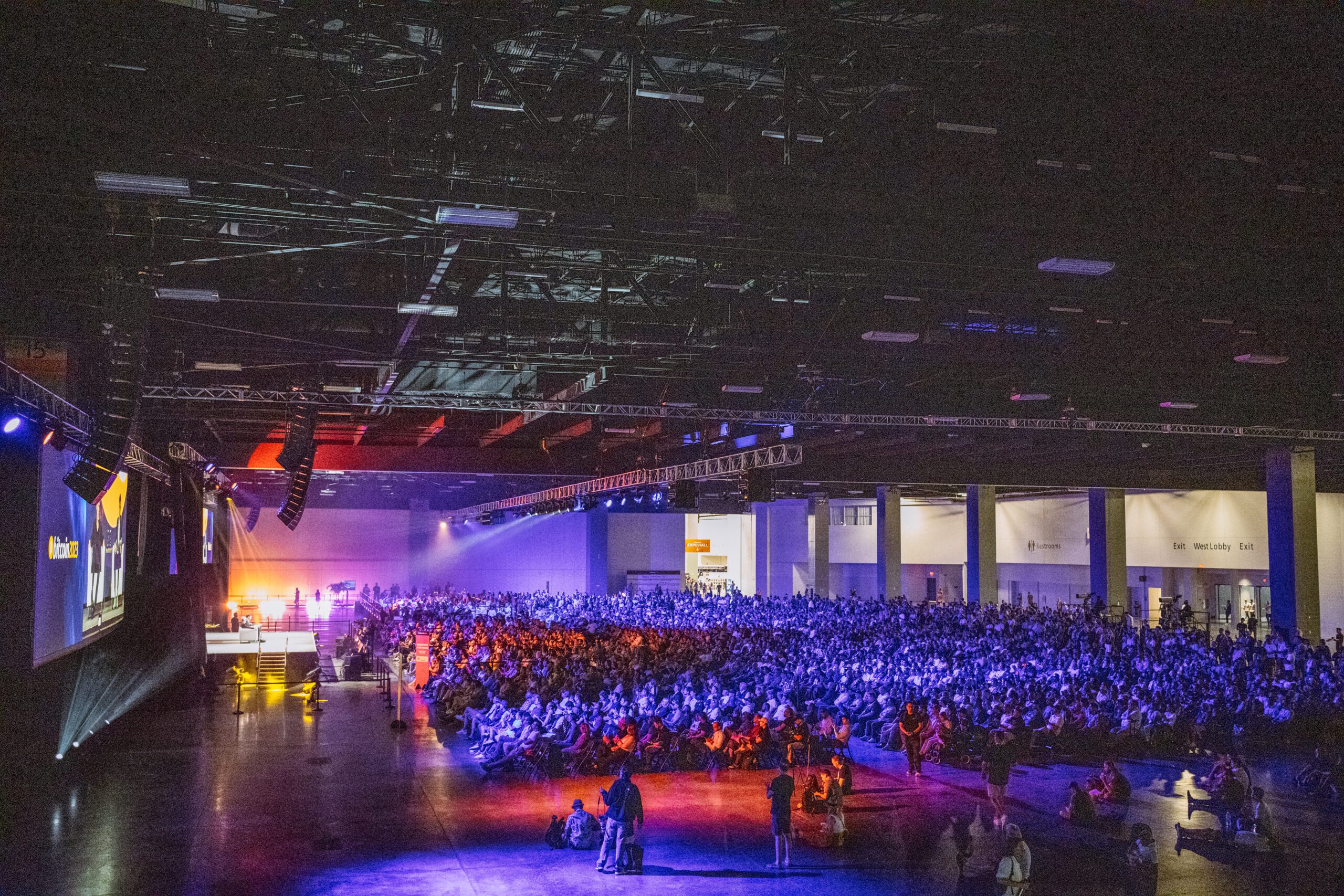Welcome to the world of Bitcoin mining. If you’re intrigued by the idea of generating your own bitcoin, you’re in the right place. In this comprehensive guide, we’ll explore the nuts and bolts of Bitcoin mining, its history, significance, and how you can start this potentially lucrative journey. Let’s dive in.
What is Bitcoin Mining?
At its essence, Bitcoin mining is how new bitcoins are introduced into circulation. But it’s much more than that. It’s a vital process that confirms transactions on the network, contributing to the blockchain ledger’s maintenance and development. Miners use powerful hardware to solve complex mathematical problems. The first to crack the code is rewarded with bitcoins and the cycle repeats. This process is not just a number-guessing game but a critical security mechanism that keeps the Bitcoin network stable and secure.
Why Mining Matters in the Bitcoin Ecosystem
Mining is the backbone of the Bitcoin network. It ensures fairness, security, and stability. Without miners, the network would be susceptible to attacks. By solving mathematical puzzles, miners validate transactions and fortify the network, enhancing its resilience and trustworthiness.
The Inner Workings of Bitcoin Mining
Mining involves competing to solve complex puzzles, integral to transaction verification on the blockchain. Successful miners add new blocks to the bitcoin timechain, earning bitcoins and transaction fees as rewards. This process not only generates new bitcoins but also secures the network against fraudulent activities.
Deciphering the Jargon: Blocks, Hash Rate, and Difficulty
– Blocks: These are records of the most recent Bitcoin transactions that haven’t been included in prior blocks.
– Hash Rate: This measures the network’s processing power. A higher hash rate increases the chances of finding the next block.
– Difficulty: This ensures that the time to find a new block remains consistent. As more miners join, the difficulty adjusts, maintaining the network’s equilibrium.
How to Start Your Mining Journey
To begin mining, you’ll need:
– Powerful Hardware: Consider investing in ASICs designed for mining.
– Mining Software: Select software compatible with your hardware.
– A Bitcoin Wallet: To store your mined bitcoins.
– Join a Mining Pool: Increase your chances of earning rewards by joining forces with other miners.
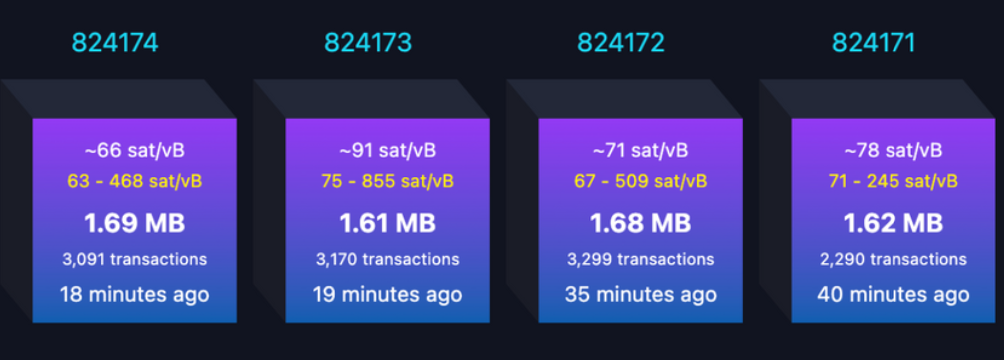
A Visualisation of the Bitcoin Blockchain (Timechain) – Source: www.mempool.space
Hashrate
The hashrate is the measuring unit of the processing power of the Bitcoin network. It represents the number of times a hash function can be computed per second. The higher the hash rate, the more chances a miner has of finding the next block and receiving the reward. As you can see on the chart below, Bitcoin’s hashrate has increased dramatically over the years as more miners have joined the network. Per January 3rd, 2024, Bitcoin’s hashrate sits at 509 exahashes per second (EH/s). Great data tool for all things mining such as hasrate and hashprice is Hashrate Index
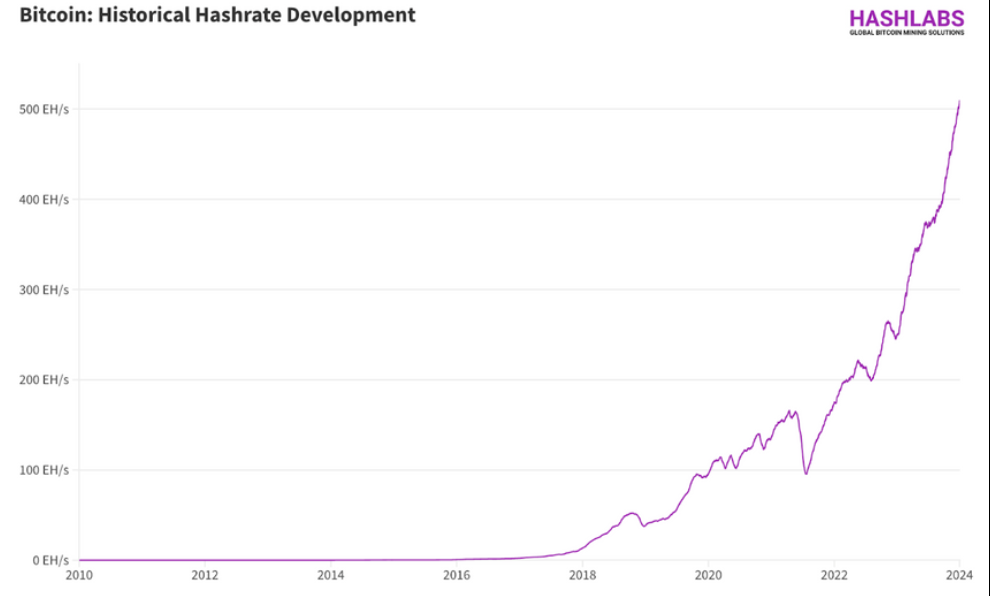
Bitcoin’s Historical Hashrate Development – Source: Hashlabs Mining
Difficulty
Mining difficulty is a measure of how difficult it is to find a hash below a given target. The Bitcoin network has a global block difficulty that adjusts every 2016 blocks based on the time it took to find the previous 2016 blocks. As you can see on the chart below, the difficulty is almost perfectly correlated with the hashrate.
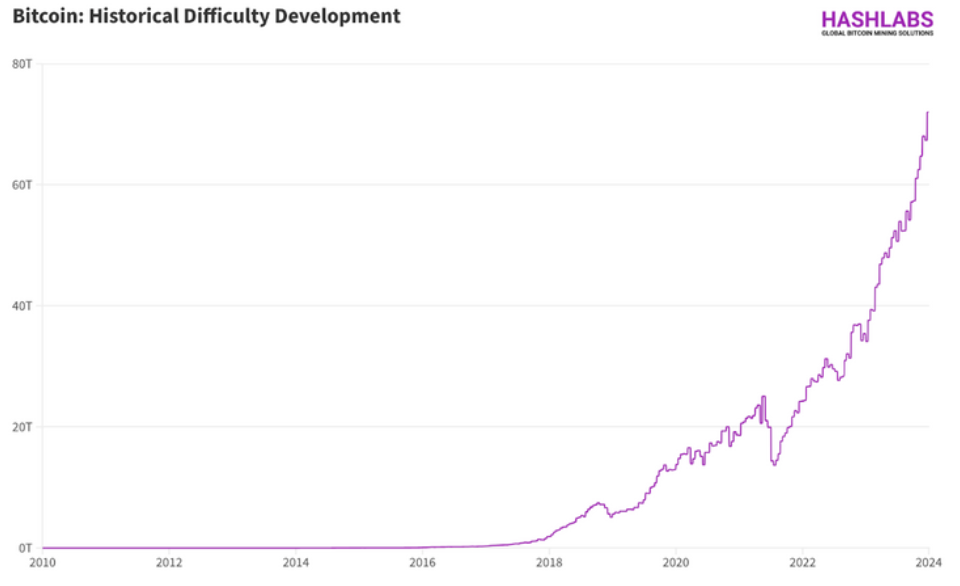
Bitcoin’s Historical Difficulty Development – Source: Hashlabs Mining
Profitable Bitcoin Mining
To be a profitable Bitcoin miner, it requires a strategic approach that includes investing in efficient mining hardware like ASICs, carefully selecting a cost-effective energy source, and joining a reliable mining pool to increase the chances of earning rewards. Understanding the market trends and the operational costs, including electricity consumption and hardware maintenance, is crucial. Miners must also stay updated with the Bitcoin network’s changes, such as difficulty adjustments and block reward halvings, to adapt their strategies accordingly. Ultimately, profitability hinges on balancing the initial and ongoing expenses against the potential rewards from mining rewards and transaction fees.
Introducing Hashlabs Mining in Indonesia
As we embrace Bitcoin mining, our partnership with Hashlabs Mining aims to educate energy industry leaders on benefits of bitcoin mining in Indonesia. Hashlabs is making mining accessible and profitable, thanks to their expertise, competitive rates, and comprehensive support. Together, we are working to bring Bitcoin mining to Indonesia, tapping into renewable energy sources. This not only aligns with the government’s goals to increase renewable energy production but also offers a sustainable path to participating in the global digital economy. To start mining in Indonesia, book a strategy call with Hashlabs Mining here.

Hashlabs Mining Team – Marek Šafárik, Alen Makhmetov, Jaran Mellerud and Kal Kassa
Conclusion
While green mining presents an opportunity for earning sound money and contributing to the Bitcoin network security, it demands careful planning, a significant initial investment, and ongoing attention to detail. The landscape of Bitcoin mining is ever-evolving, influenced by technological advancements, market dynamics, and the regulatory environment. As such, aspiring miners should conduct thorough research, continuously monitor their operations’ efficiency, and remain adaptable to changes within the bitcoin ecosystem. With the right approach and dedication, Bitcoin mining can be a rewarding endeavor.



